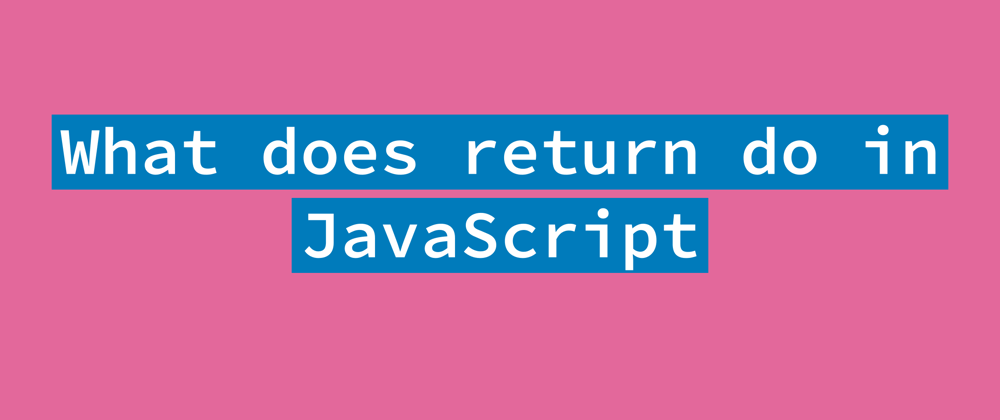Like other programming languages, JavaScript allows using return statements in functions. A return statement does the following:
- Halts function execution and returns control to calling module
- Returns one or many values. This is optional.
In this tutorial, you'll learn more about syntax and usage of this return statement.
The general syntax
The return statement has the following syntax:
return value;
The keyword value refers to a value that will be returned by your function. This is optional. You can use a return statement without specifying any value.
You can use a single value variable such as string, integer, etc to return a single value.
You can use an array with a return statement, if you need return many values.
The return statement also can return objects of user defined types.
Coding Samples
Here comes a few simple examples. It helps in learning various ways to use return statements in JavaScript functions.
You can use the return statement to put an immediate halt in function execution and return a value -
function checkPrimeNumber(num) {
if (num == 0)
return true;
if (num == 1)
return false;
for (i = 2; i < num / 2; i++) {
if (num % i == 0)
return false;
}
return true;
}
console.log(checkPrimeNumber(7));
The function checkPrimeNumber() accepts a number as parameter. It checks if the number is a prime number or not. Once it makes a decision, it halts execution and return a true or false value to calling module.
The example passes a prime number, 7 as input. Thus the program responds with a true value. You can try running the source code with different input values.
Often developers use a return statement with no value, to stop the function execution. The below example uses the function greetUser() to display a greetings message to the user. The function uses a return statement with no value to halt the function execution.
function greetUser(name) {
alert("Hello " + name + "!");
return;
}
console.log(greetUser("Steve"));
The program outputs a message, "Hello Steve!".
A return statement can return user-defined types also. The below functions return JavaScript objects and an array of objects.
//Example of a return statement returns an object
function returnObj(FirstName, LastName, Course) {
var student = {
firstName: FirstName,
lastName: LastName,
course: Course
};
return student;
}
console.log(returnObj("John", "Smith", "Chemistry"));
// Example of a return statement returns an array of objects
function returnObjectArray() {
var student = [{
firstName: "John",
lastName: "Smith",
course: "Physics"
}, {
firstName: "Steve",
lastName: "Owen",
course: "Chemistry"
}];
return student;
}
console.log(returnObjectArray());
Any JavaScript console can run the above source code. You can try experimenting, modifying these programs, or writing something new.
Get my free e-book to prepare for the technical interview or start to Learn Full-Stack JavaScript





Latest comments (3)
Fun fact about return statements. They get semicolon insertion if they're by themselves. That is:
is not the same as
While it doesn't usually come up, because who would write code like that?, it is a difference between javascript and say, c or c++ where both return styles would return 3.
Agreed, but it's more likely to write code like this in React...
Which is why most editors will insert a parenthesis....
Parenthesis insertion to combat semicolon insertion! Amazing 😁